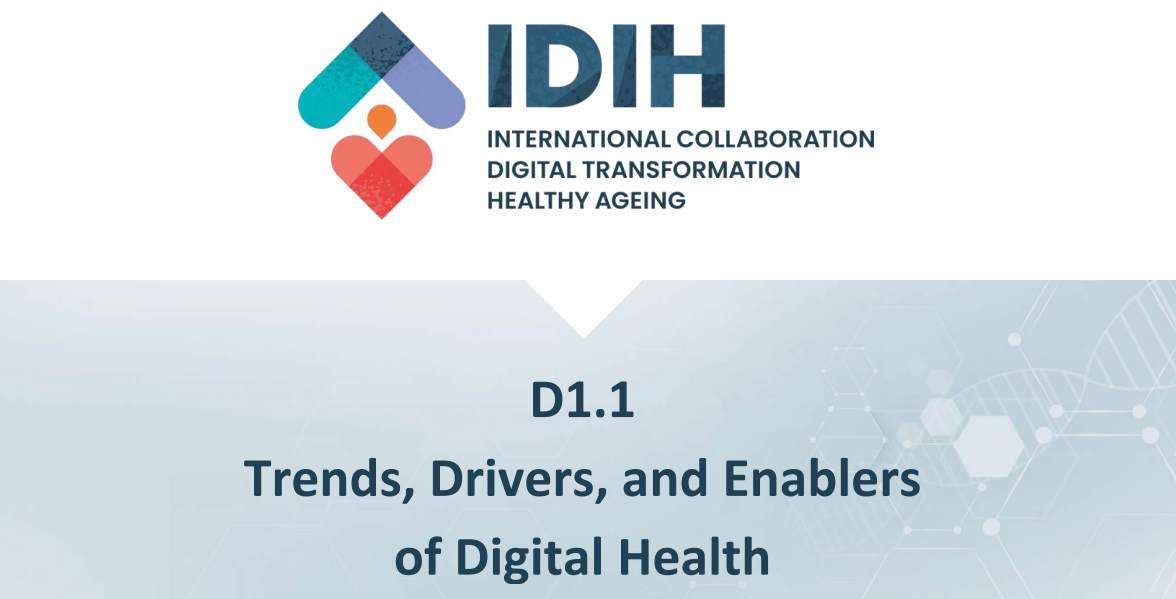This report is part of the International Digital Health Cooperation for Preventive, Integrated, Independent and Inclusive Living (IDIH) project funded under the European Union Horizon 2020 Research and Innovation Programme. It examines current trends, emerging technologies, and the actors that will enable or hinder the adoption of digital health.
The growing elder population worldwide has unique implications for health services and, in recent years, spurred demand for innovative technologies that support active and healthy ageing. As older individuals continue to experience longer life spans, this will be accompanied by an increased prevalence of chronic conditions that will strain health care systems and economies. Through our research, we have found that patients are increasingly demanding home and mobile-based care that supports ageing in place and believe that there will be continued global demand for clinically useful technologies that support active and health ageing.
The current state of health technology builds on the foundation of the now commonplace electronic medical records (EMR) and is focusing on empowering health care stakeholders through social media, mobile applications, analytics, and cloud computing (SMAC) technologies, including telehealth, remote monitoring and enhanced communications. With these technologies, consumers are becoming equipped with tools that allow them to access their health data, understand their own health, and manage ongoing care outside of traditional medical settings.
In the next five to ten years, consumers will further steer away from an event-driven care model to a continuous care process mediated by technology. Instead of face to face encounters acting as the main vehicle for care delivery, technologies (with additional services and digitization layers), will automate certain key aspects of care management. These services will then be combined with in-person care management, a concept we have named “Flipping the Stack.”
This preventative model will be powered by technologies such as sensors, advanced Internet of things (IoT), artificial intelligence (AI), augmented and virtual reality (AR/VR), blockchain, fast health interoperability resources (FHIR), and other digital health solutions. IoT combined with sensors and wearables will become an integral part of care delivery and create “smart” environments that monitor a patient’s health, onset of diseases, and disease progression. AI will automatically alert care providers of problems, ideally in advance of serious or life-threatening issues. If any interventions are needed, face to face care can be provided on-demand and managed by hybrid health models and/or technology-based service organizations.
Digital health adoption is gaining traction but is heavily reliant on support and funding from a variety of health care stakeholders—governments, regulatory bodies, insurers, investors, and the consumers themselves. The interaction between these players vary from country to country largely due to different regulations and priorities. However, with the global population ageing rapidly, each country will share a common interest in promoting active and healthy societies. Hence, it is vital for international partners to convene and construct a roadmap for global digital health development that will support citizens in living and ageing well.
If you wish to learn more about Trends, Drivers, and Enablers of Digital Health, our report is available here, on the Outcomes section of our website.

